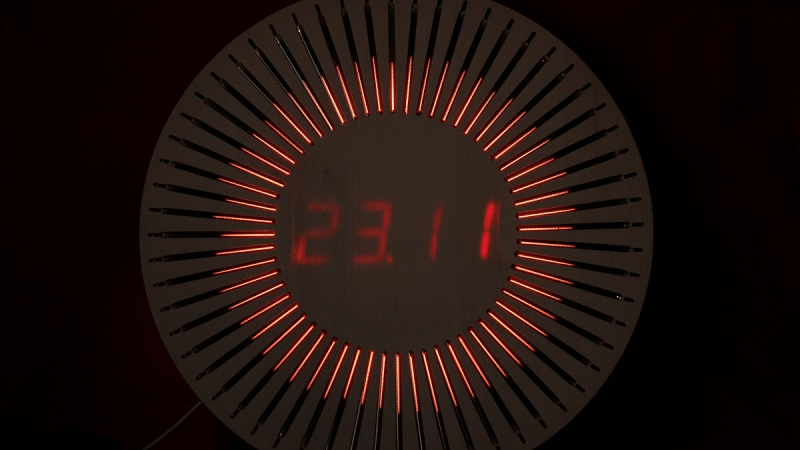When it comes to Nixie clocks, we all pretty much know what to expect: a bunch of Nixies with some RGB LEDs underneath, a wooden case of some sort, and maybe some brass gears or fittings for that authentic steampunk look. It’s not that we don’t appreciate these builds, but the convergent designs can be a little much sometimes. Thankfully, this 60-tube Nixie clock bears that mold, and in a big way.
The key to [limpkin]’s design is the IN-9 Nixie, which is the long, skinny tube that used to show up as linear indicators; think bar graph displays on bench multimeters or the VU meters on mixing boards. [limpkin] realized that 60 on the tubes could be arranged radially to represent hours or minutes, and potentially so much more. The length of the segment that lights up in the IN-9 is controlled by the current through the tube, so [limpkin] designed a simple driver for each segment that takes a PWM signal as its input. The job of a 60-channel, 14-bit PWM controller fell to an FPGA. An ESP8266 — all the rage five years ago when he started the project — took care of timekeeping and control, as well as driving a more traditional clock display of four 7-segment LEDs in the center of the clock face.
The custom PCB lives in a CNC-machined MDF wood face; the IN-9s shine through slots in the face, while the seven-segment display shows through a thinned area. It looks pretty cool, and there are a lot of display options, like the audio spectrograph shown in the video below. We’re glad [limpkin] decided to share this one after all this time.
















realized that 60 on the tubes
realized that 60 onf the tubes
realized that 60 of the tubes
Oh old eyes
Realized that 60 of the tubes.
Video is cool but I don’t see it doing “clock stuff”…. like telling the time? Binary or tix clock count some blocks… perhaps you have to decode the pulses to get the time… clock fail. Cool use of nixie tubes and customer pwm driven pcb’s win. Just showing the time would have been too simple…
… and because of this, the project is a fail.
Gotta’ say it: not Nixies. Cool tubes and nice application, but not Nixies. Calling these Nixies is like calling a block of wood a Kleenex.
This is wikipedia’s definition of a nixie tube: “A Nixie tube (English: /ˈnɪk.siː/ NIK-see), or cold cathode display,[1] is an electronic device used for displaying numerals or other information using glow discharge. “
I have to agree. These are neon displays. They do not display numerals, so they cannot be nixies.
I’m super confused too. But now seeing his website, that youtube video is not showing time. I think it’s some audio waveform type of thing. The “real clock” is the digital clock in the center (not showing on the video). And the opportunity to show the 60 segments lighting as hours, minutes, and seconds is totally missed. sad.
I love that he used a Xilinx Spartan 6 FPGA, it could have done this task 100 times over, and he used 14 bit PWM – he must have very high resolution eyes.
All cool though and a bit of overkill is fine if it gets the job done.